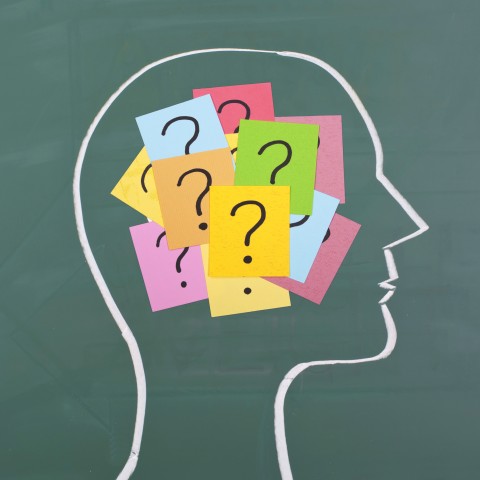
Are you afraid to make mistakes in Dutch? In your studies, you’re bound to make a few. And that’s no big deal!
Making mistakes is human, and even Dutch natives make some of the mistakes we’ll cover in this article. It’s through expressing yourself and making mistakes that you’ll really master the language. So making mistakes in the first place is no problem, but always try to learn from them!
That said, wouldn’t it be nice to be aware of some of the most common mistakes in learning Dutch?
This is exactly what DutchPod101 has in mind for you with this guide. Have a look at the ten most common Dutch mistakes and impress your new Dutch friends with your great language skills.
 Table of Contents
Table of Contents
- Dutch Pronunciation Mistakes
- Vocabulary – Dutch Word Mistakes
- Word Order Mistakes
- Common Dutch Grammar Errors
- A Special Dutch Mistake
- The Biggest Mistake in Dutch Language-Learning
- How DutchPod101 Can Help You Learn More Dutch
1. Dutch Pronunciation Mistakes

Dutch pronunciation is tricky, even for fluent Dutch-speakers. Dutch is known for its weird sounds and long words with the strangest combinations of letters.
So, let’s have a look at two common pronunciation mistakes for Dutch-learners.
1. Pronouncing diphthongs incorrectly
Do you remember those tricky diphthongs? A diphthong is the combination of two vowels that, together, make a particular sound—a sound that no vowel in Dutch makes on its own.
A common mistake Dutch-learners make is to pronounce the letters separately, rather than as one fluid sound.
So let’s recap and master, once and for all, the challenging sounds of the nine Dutch diphthongs:
| Letter | (English) Pronunciation | Example |
| ai | Pronounced as [I], as in “I am” in English | mais (“corn”) |
| au | Pronounced like [ow] in the English word “now” | auto (“car”) |
| ei | Pronounced as the [i] in the English word “find” | ei (“egg”) |
| eu | This sound doesn’t exist in English, but you may know it from the French word “beurre.” | leuk (“fun”) |
| ie | Pronounced like [ee] in the English word “bee” | mier (“ant”) |
| ij | Pronounced exactly the same as the Dutch ei diphthong | wijn (“wine”) |
| oe | Pronounced like [oo] in the English word “pool” | moe (“tired”) |
| ou | This diphthong has exactly the same sound as the Dutch au diphthong. | koud (“cold”) |
| ui | This sound doesn’t exist in English, but it’s a combination of the [a] sound in “man” followed by a long Dutch u. | muis (“mouse”) |
2. Pronouncing sch as sk
As you’ve probably noticed, Dutch is a language with a lot of g-sounds, more than you’re probably used to in your own language. And those g-sounds may surprise you, as they even occur in the ch and sch consonant combinations. Well, you’re not alone in your struggle. The pronunciation of sch as sk is one of the most common pronunciation mistakes for Dutch-learners (who often make too much of a k-sound).
Let’s have a look at how you should pronounce this:
| Letter | (English) Pronunciation | Example |
| sch | Pronounced like an [s] followed by a harsh [ch], as in the Scottish word “loch.” | schaap (“sheep”) |
- → Would you like to improve your Dutch pronunciation? Then read this list on How to Improve Your Speaking Skills or have a look at our Top 10 Hardest Words to Pronounce.
2. Vocabulary – Dutch Word Mistakes

You’re learning your Dutch vocabulary and are feeling quite confident. However, confusion is near. It may be because of words with multiple meanings or because of those extremely long Dutch words.
Let’s have a look at two common mistakes in learning Dutch vocabulary.
3. Confusing words with multiple meanings
The Dutch language is full of words with multiple meanings (homonymes), so a common mistake of Dutch-learners is to not learn the different meanings of a Dutch word. Only by mastering the multiple meanings can you use and understand them correctly in a given context.
Here are some funny examples:
| Word | Meaning 1 | Meaning 2 |
|---|---|---|
| Arm | “Arm” (the body part) | “Poor” |
| Gerecht | “Dish” | “Court” |
| Kussen | “Pillow” | “To kiss” / “Kisses” |
| Kater | “Male cat” | “Hangover” |
| Weer | “Weather” | “Again” |
- → Having trouble remembering the meaning of words? Then have a look at our useful tips and tricks on remembering Dutch words.
4. Splitting up compound words
Okay, let’s now continue with those confusing compound words. The Dutch language is known for its long words, so be aware of this common mistake of Dutch-learners: splitting up the compound words.
All you can do here is be aware of this peculiar characteristic of the Dutch language and keep on improving your Dutch vocabulary.
Here are some examples of compound words consisting of two, three, and even five parts:
| Parts | Dutch Compound Word | Meaning in English |
|---|---|---|
| 2 | Broodmes | “Breadknife” |
| 3 | Langeafstandloper | “Long-distance runner” |
| … to 5 | Kindercarnavalsoptochtvoorbereidingswerkzaamheden (This is the longest word in the Dutch language.) | “Preparation activities plan for a children’s carnival procession” |

- → Are you having difficulties understanding compound words? Try to divide them into smaller parts and see if you can understand the different parts.
3. Word Order Mistakes
Dutch word order can be confusing, possibly because of its similarities to English or because of its weird habit of splitting up verbs.
5. Using the word doe in yes/no questions
Dutch can be quite similar to English, so you’re bound to mix the rules up sometimes. This fifth most common Dutch mistake is to use the Dutch word doe (“to do”) in yes/no questions.
Contrary to English, Dutch doesn’t use the auxiliary “do” in questions. So don’t use it, otherwise your Dutch question word order will be incorrect.
Here are some examples:
Example 1: “Do you like dancing?”
- Correct: Houd je van dansen?
- Wrong: Doe jij houden van dansen?
Example 2: “Do you want to marry me?”
- Correct: Wil je met me trouwen?
- Wrong: Doe jij met me willen trouwen?
Let’s have a look at the word order:
Working verb + Subject + (Object +) Other verb
Some simple examples:
- Kom je? (“Are you coming?”)
- Werkt hij? (“Does he work?”)
- → For more question examples, don’t forget to have a look at our list of the Top 25 Questions You Need to Know!
6. Not knowing when to split the verbs in sentences
Dutch word order can be even more confusing when a sentence has many words. Even more so when there are several verbs in the mix, in which case one part of the verb will be at the beginning of the sentence and other parts will be at the end.
How do you know when to split a verb? Be cautious when using the present perfect, past perfect, future simple, future perfect, conditional, and conditional perfect verbs. Here, you may need to add a verb to the end of a sentence.
Let’s have a look at the sentence structure for these tenses:
Subject + Working verb + Adverb + (Adjective +) Direct object + (Adjective +) (Indirect object +) Other verb
Let’s give you an example for each of the six aforementioned Dutch tenses:
- Present perfect:
De jongen heeft in het huis de gele deur met zwarte verf geverfd.
“The boy has painted the yellow door in the house with black paint.”
- Past perfect:
De jongen had in het huis de gele deur met zwarte verf geverfd.
“The boy has painted the yellow door in the house with black paint.”
- Future simple:
De jongen zal in het huis de gele deur met zwarte verf verven.
“The boy will paint the yellow door in the house with black paint.”
- Future perfect:
De jongen zal in het huis de gele deur met zwarte verf hebben geverfd.
“The boy will have painted the yellow door in the house with black paint.”
- Conditional:
De jongen zou in het huis de gele deur met zwarte verf verven.
“The boy would paint the yellow door in the house with black paint.”
- Conditional perfect:
De jongen zou in het huis de gele deur met zwarte verf hebben geverfd.
“The boy would have painted the yellow door in the house with black paint.”

- → Try to think of easy sentences that you can use like this. This way, you can improve your own Dutch sentence structures and learn how to avoid this common mistake of Dutch-learners.
- → Are you struggling with Dutch sentence patterns? Then have a look at this useful list of the Top 10 Sentence Patterns for Beginners.
4. Common Dutch Grammar Errors
Grammar is a challenge in every language, and Dutch is no exception. Let’s learn from our mistakes!
7. Mixing up the dt ending
Although the Dutch present tense might look easy, be aware of one of the most common Dutch grammar mistakes: mixing up the dt ending.
So when should you use the dt ending? It has to be used with certain subjects when the verb used has a -d root ending.
Let’s take this mistake in Dutch grammar step-by-step:
How do you get the infinitive in Dutch? Well, Dutch infinitives are the plural and present tense verbs. They usually end with -en, as in lopen (“to walk”). Sometimes, they end with only -n, as in zijn (“to be”).
Before the Dutch infinitive, you can almost always put Ik kan (“I can”):
- Ik kan fietsen.
“I can cycle.”
Or:
- Ik kan antwoorden.
“I can answer.”
So how do you get the root of your verb? You simply remove the -en ending. So in this case, fiets is the root of fietsen and antwoord of antwoorden.
| Subject | Fietsen present tense (“to cycle”) | Antwoorden present tense (“to reply”) |
| Ik (“I”) | fiets | antwoord |
| Jij, u (“You”) | fietst | antwoordt |
| Hij, zij, het (“He, she, it”) | fietst | antwoordt |
| Wij (“We”) | fietsen | antwoorden |
| Zij (“They”) | fietsen | antwoorden |
As you can see, in the verb antwoorden, because the root ends with a -d, it becomes -dt for the “you” and “he, she, it” subjects. So when in doubt, look at the conjugation of a verb that doesn’t end with a -d (such as fietsen), and you’ll know what to do.
8. Making words plural with an -s instead of -en
English and Dutch have many similarities. Just like English, Dutch makes words plural by changing that word’s ending. However, avoid the common mistake in Dutch of making plural words with an -s instead of -en.
There are some cases where we can add an -s, but most of the time, we add -en.
| Singular | Plural |
| Kat (“Cat”) | Katten (“Cats”) |
| Kus (“Kiss”) | Kussen (“Kisses”) |
| Stoel (“Chair”) | Stoelen (“Chairs”) |
| Bord (“Plate”) | Borden (“Plates”) |
| Banaan (“Banana”) | Bananen (“Bananas”) |
5. A Special Dutch Mistake

Every culture has its own peculiarities. So what’s a Dutch-learning mistake that’s closely connected to Dutch culture?
9. Switching to English every time you struggle speaking Dutch
This may not be a grammar or vocabulary blunder, but it’s a common mistake in learning Dutch.
Many Dutch people speak English very well, so it might be tempting to switch from Dutch to English every time you start to struggle. Try not to do that too much, as you’ll only master Dutch if you really practice the language.
This impulse to switch to English may not even come from you, as the Dutch are always happy to speak English. When they see you struggle, or even notice the littlest hint of an accent, they’ll try to “help” you by suggesting you switch to English. So it can definitely be called a typical cultural challenge that Dutch-learners face.
Instead of switching, just try to explain that you’re practicing their beautiful language. They’ll be patient, and maybe even flattered that you’re trying to speak their language (as a lot of foreigners don’t even bother).
6. The Biggest Mistake in Dutch Language-Learning
Last, but definitely not least, try to avoid the biggest mistake: mixing up de and het.
10. “The” in Dutch: het vs. de
Mixing up articles: this is seen as the most common and most typical mistake of Dutch-learners.
In Dutch, there are two options for “the”: de and het. It’s very common to hear Dutch-learners mix them up, and for a good reason: the Dutch language lacks a clear explanation of which one to use in what situations. In theory, all masculine and feminine words get de, while all neuter words get het:
- De vrouw (“The woman”)
- De man (“The man”)
- Het kind (“The child” – is neuter)
However, in practice, this won’t help you that much as there’s not always a good explanation as to why a word is feminine, masculine, or neuter. Dutch words don’t have a clear gender indication.
Luckily, there are a few indications that can help you:
- All words referring to people are de-words (de voetballer [“the football player”] / de president [“the president”]).
- All plural words get de (de katten [“the cats”] / de stoelen [“the chairs”]).
- All words made smaller with (e)(t/d)je are neuter (het kindje [“the little child”] / het bloemetje [“the little flower”]).
- Words ending with -el or -er are often de-words (de tafel [“the table”] / de bakker [“the baker”]).
- All infinitive verbs that are used as a noun have the neuter het (het fietsen [“the cycling”] / het schrijven [“the writing”]).
- Words with standard prefixes like ge-, ver-, ont-, and be-, and without an -ing ending, are neuter (het verhaal [“the story”] / het ontslag [“the resignation”]).
- Almost all words with the standard suffixes -ing, -ij, -ie, -e, and -heid are feminine (de politie [“the police”] / de schoonheid [“the beauty”] / de drukkerij [“the printing company”] /, de dame [“the lady”]).
Practice is key. When in doubt, look up the word in the dictionary (it will say [m], [v], or [o] behind the word). This way, you’ll learn the combinations, and with time, you’ll develop the instinct of when to use de and when to use het.
In the meantime, remember that it’s okay to make mistakes in Dutch, because it means that you’re learning.
- → Would you like to improve your Dutch? Get active and boost your Dutch studies with our list of the Top 10 Language-Learning Strategies.

7. How DutchPod101 Can Help You Learn More Dutch
In this guide, you’ve learned all about the ten most common mistakes in Dutch. You know what to do and what not to do. We’ve made you aware of the most common mistakes and gave you some hints on how to avoid them.
Yes, you’re bound to make mistakes in Dutch, but this guide has given you some tools to recognize them. From the common pronunciation mistakes for Dutch-learners, vocabulary word mistakes, and word order mistakes, to the “biggest mistake of all.”
So are you already feeling more confident about your Dutch? Which one of the mistakes do you make the most and how can you avoid it in the future?
Start avoiding these mistakes today with the help of DutchPod101.com. Boost your studies with our useful vocabulary lists with audio recordings and other free resources.
Would you like some personal one-on-one coaching? Check out our premium MyTeacher service. We’ll connect you with a private teacher who will help you improve your Dutch through interactive exercises and personalized feedback.
Practice Dutch and learn from your mistakes with DutchPod101!










